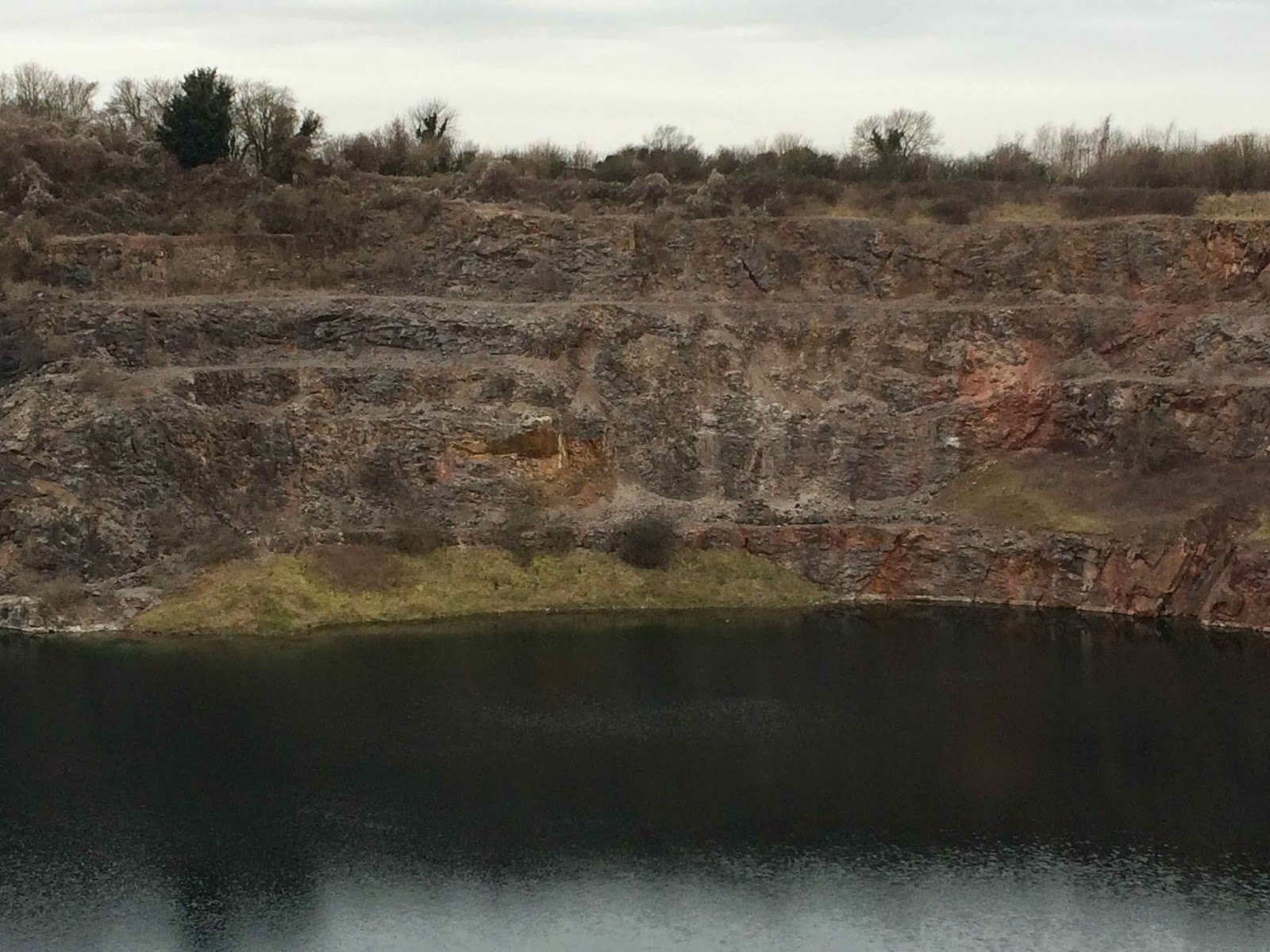By Helen Roberts
It’s a bitterly cold February morning and I’ve driven to the outskirts of the small village of Wick in South Gloucestershire to meet with Roland de Hauke. Roland is going to give me a tour of Wick Quarry and the local nature reserve. It is extremely claggy underfoot and parts of the road are submerged underwater, so I am extremely relieved when Roland shows me to his 4 x 4 vehicle in order to tour the vast 100-acre site.
 |
| First view of Wick Quarry. Credit: Helen Roberts. |
Roland, a passionate botanist and conservationist, bought the quarry and nature reserve two years ago with the aim of restoring it with a mosaic of habitats to maximise biodiversity.
“I have always been interested in botany and conservation and I am fascinated by trees,” remarks Roland, “and I am particularly keen to introduce species of local provenance. In the past, a lot of quarry restoration has involved a broad-brush approach, with a view that what works well on one particular site will work for other sites too. This just simply isn’t the case and I want to change that perception.”
 |
A second quarry lake where it is hoped floating reed beds
will be established. Credit: Helen Roberts. |
I was impressed by the quarry and as a landscape architect this was probably one of the most interesting sites I’d visited in terms of visual impact and biodiversity potential. I could imagine the site in 25 to 50 years time as a vital stepping-stone for local habitats as our landscape becomes further fragmented by development.
Propagating rare and endemic species
Within the University of Bristol Botanic Garden’s local plant collection are some special trees within the Sorbus genus, which are more commonly known as whitebeams, rowans and wild service trees. Two species, Bristol whitebeam (Sorbus bristoliensis) and Wilmott’s whitebeam (Sorbus wilmottiana), grow only in the region of the Avon Gorge.
 |
The location of some of the plants donated by the
University of Bristol Botanic Garden. Credit: Helen Roberts. |
The Garden maintains these rare endemic species within its collection as part of the ‘Global Strategy for Plant Conservation’. Threatened plant species are kept in ex situcollections so that they are available for recovery and restoration programmes.
The Botanic Garden has donated a number of Sorbus species to Roland in the hope that they may get established within his quarry and become a self supporting population, including S. aria, S. bristoliensis, S. eminens, S. anglica, and S. porrigentiformis. Both the Director of the Garden, Professor Simon Hiscock, and the Curator, Nick Wray, have given Roland advice on planting and species introduction. The donated plants were all propagated from wild plants in the Avon Gorge and Leigh Woods between 1996 and 1997 by the Garden staff.
“Actually, planting the donated plants has been an interesting and exciting task as accessibility is an issue and the rock faces are fairly steep and loose in places”, explains Roland.
Creating wetlands
The lake itself is problematic because its steep sides do not lend themselves to wetland creation; this is where Roland is concentrating his efforts over the next 5 years or so. He will make shallower shelved areas into the water with the idea of creating floating reed bed habitats, which will be planted in the spring. These reed bed habitats can support invertebrates and fish, which are food resources that will attract wetland birds.
 |
Sheer quarry sides descend into the lake.
Credit: Helen Roberts. |
“At the moment we are not seeing a lot of wetland birds using the quarry lakes for any long periods of time as there just isn’t the food available for them”, explains Roland. “After about a day or two, the water birds simply move on to find a better food resource and that’s where reed beds will provide a suitable habitat for [them] to stay for longer.”
The future of the quarry
Roland is also looking to develop huge areas of species-rich grassland and is seeking advice on species that will attract a diversity of invertebrates.
The site will likely be closed to the general public in order to reduce the disturbance by humans. However, it will be open to specialist interest groups, including local schools, to help educate local communities about the importance of rare local species, illustrate effective quarry restoration and allow the long term monitoring and management of the site.
“This is a long term project that I’m really excited about and at public consultation meetings most people there have been genuinely excited about it too,” commented Roland. “I am very grateful to the University of Bristol Botanic Garden for the donated plants and look forward to working with them in future.”





